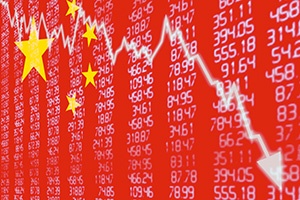 Yesterday, we talked about the effects of the tariffs on the stock market and why those effects—even though they are real—are likely to be limited. Today, I want to discuss what actually happened with the tariffs, what they mean for the economy, and where this situation is likely to go. The conclusions from yesterday on the stock market remain the same, but this discussion will provide valuable context for what might happen in the future. So, let’s start with what happened.
Yesterday, we talked about the effects of the tariffs on the stock market and why those effects—even though they are real—are likely to be limited. Today, I want to discuss what actually happened with the tariffs, what they mean for the economy, and where this situation is likely to go. The conclusions from yesterday on the stock market remain the same, but this discussion will provide valuable context for what might happen in the future. So, let’s start with what happened.
Who pays the tariffs?
To start, tariffs are a tax on imports. It really is that simple. Who pays is a bit more complicated, but there are three main possibilities:
- The sellers could pay, by lowering their prices to offset the tariffs and taking the hit in their profits.
- The importers could pay, by paying the same price plus the tariffs, selling the product for the same price as that pre-tariff, and taking the hit in their profits.
- The importers could raise their prices, and the final buyers would pay, taking the hit in their wallets.
There are other ways that tariffs can be finessed—weakening the exporter’s currency, for example. But these options are limited and ultimately take us back to the big three options above. Indeed, China has weakened its currency, offsetting much of the initial round of tariffs, but that seems to be played out. China is now at the point where someone has to start paying real money.
Last Friday, the U.S. raised tariffs further, from 10 percent to 25 percent, on $200 billion in Chinese goods. Simple math tells us that the effect then went from $20 billion to $50 billion. So, there is another $30 billion that, per the analysis above, someone has to pay. There is also the prospect of tariffs on a wider range of goods, which would push that bill even higher.
So, which of the three will it be? Based on what we know, Chinese companies are generally operating at very low profit margins, so they simply can’t afford to take the hit. Much, if not all, of the burden will therefore affect U.S. company profits or U.S. consumers, which will be a headwind for the U.S. economy.
Tariffs are just the beginning
Still, $30 billion in the context of a $20 trillion economy simply isn’t all that much. Direct effects will be small, on the order of a rounding error. So, why do we care? Shouldn’t the economy simply shrug this off?
If the story ended here, it likely would. The U.S. tariffs, however, are just the first round of the game. The damage to the Chinese economy is much larger, and China is starting to retaliate. Already, China has announced a round of tariffs on U.S. imports, which are specifically targeted to do as much damage to the U.S. economy as possible, with a special focus on farmers. China is also starting to restrict the activities of U.S. companies in China, including some very high-profile ones (e.g., Apple), as a way of retaliating. With its centrally controlled economy, China has a much wider range of tools to hit the U.S. economy than the U.S. does, and it will certainly use them.
The direct impact on the U.S. is therefore small, but the total impact will be larger—and is growing. We also have not yet even considered the impacts of the trade war on countries outside the U.S. and China, which will certainly affect the U.S. both directly and indirectly.
The bigger impact, however, will be on confidence. Business confidence, especially in the manufacturing sector, has already taken a knock, and the most recent developments will make the situation worse. Consumer confidence will certainly take a hit on rising prices, if the tariffs are passed through in prices. Neither of these effects will be immediate but will show up over time—just like the economic impact.
What if the trade war continues?
This overview explains both the initial stock market decline and the subsequent partial recovery. The damage from the trade war is real and material, but it is not substantial. Some downward adjustment therefore made sense (but not a large one), which largely explains where we are right now. With the prospect of further economic damage, though, it also holds the prospect of further downward adjustments if the trade war continues.
The most probable scenario remains a deal that ends the trade war. The incentives, for both sides, are overwhelmingly in favor of a deal, in which case we should see markets recover. If not, though, we can certainly expect continued slow erosion as the headwinds eat away at confidence and growth.


 Print
Print

